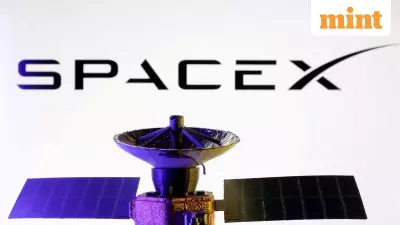
In an astronomical breakthrough that has sent ripples through the scientific community, India has become ground zero for studying one of the most extraordinary cosmic visitors ever detected - the interstellar comet known as 3I/ATLAS.
What Exactly is 3I/ATLAS?
3I/ATLAS represents only the third confirmed interstellar object to visit our solar system, following the famous Oumuamua in 2017 and comet Borisov in 2019. The "3I" in its name stands for "Third Interstellar," while ATLAS refers to the Asteroid Terrestrial-impact Last Alert System that first spotted this celestial wanderer.
The Cosmic Origins That Will Blow Your Mind
This isn't just another space rock - 3I/ATLAS carries with it secrets from distant star systems far beyond our own. Unlike regular comets that originate from our solar system's Oort Cloud or Kuiper Belt, this interstellar traveler began its journey around another star, making it a genuine messenger from deep space.
Key Characteristics That Make It Special:
- Hyperbolic Orbit: Unlike the elliptical orbits of solar system objects, 3I/ATLAS follows a hyperbolic trajectory, meaning it's just passing through and won't be coming back
- Extreme Speed: Traveling at velocities that exceed our solar system's escape velocity, confirming its interstellar origins
- Unique Composition: Scientists are eagerly studying its chemical makeup to understand how planetary systems around other stars differ from ours
Why This Discovery Matters for India and Beyond
The detection and study of 3I/ATLAS represents a monumental achievement for astronomy and space science. This isn't just about tracking a space object - it's about understanding the building blocks of planetary systems throughout our galaxy.
Indian astronomers and space researchers are at the forefront of this discovery, contributing valuable data that helps answer fundamental questions about our place in the universe. The study of such interstellar visitors could potentially reveal clues about how common Earth-like planets might be throughout the cosmos.
The Future of Interstellar Research
As detection technology improves, scientists anticipate discovering more such interstellar visitors. Each new discovery like 3I/ATLAS provides another piece in the cosmic puzzle, helping us understand the frequency and nature of objects traveling between star systems.
The era of interstellar astronomy has truly begun, and India is playing a crucial role in this exciting new frontier of space exploration. As we continue to study 3I/ATLAS and future interstellar visitors, we're not just watching space rocks - we're reading the history of our galactic neighborhood written in ice and dust.





